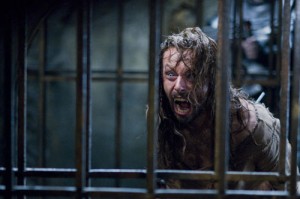 My most recent article was recently posted at Cinefantastique Online. It looks briefly at the origins and developing mythology of the werewolf in horror cinema. The article can be viewed here. Following is an excerpt:
My most recent article was recently posted at Cinefantastique Online. It looks briefly at the origins and developing mythology of the werewolf in horror cinema. The article can be viewed here. Following is an excerpt:
In terms of literary development, the werewolf appeared in three novels in the nineteenth century, with George W. M. Reynold’s Wagner the Wehrwolf recognized as one of the most significant. However, it was Guy Endore’s 1934 novel The Werewolf of Paris that would attract the most attention and become influential in the cinematic development of werewolf mythology. Endore’s book (or at least its title) was the inspiration for Universal Pictures’ first exploration of the lycanthrope in THE WEREWOLF OF LONDON.
However, it was Universal’s next film, THE WOLF MAN with Lon Chaney, Jr., that would cement the werewolf in popular culture so that the creature would become an iconic figure. This film would become something of a template for Western audiences in their understanding of werewolf mythology, with subsequent films providing deviations and modifications from this basic narrative core. As David Skal describes the impact of THE WOLF MAN and the subsequent werewolf films derived from this classic in the development of the mythology, “The Wolf Man’s saga was the most consistent and sustained monster myth of [World War II], beginning with the first year of America’s direct involvement, and finishing up just in time for Hiroshima.”





There are no responses yet